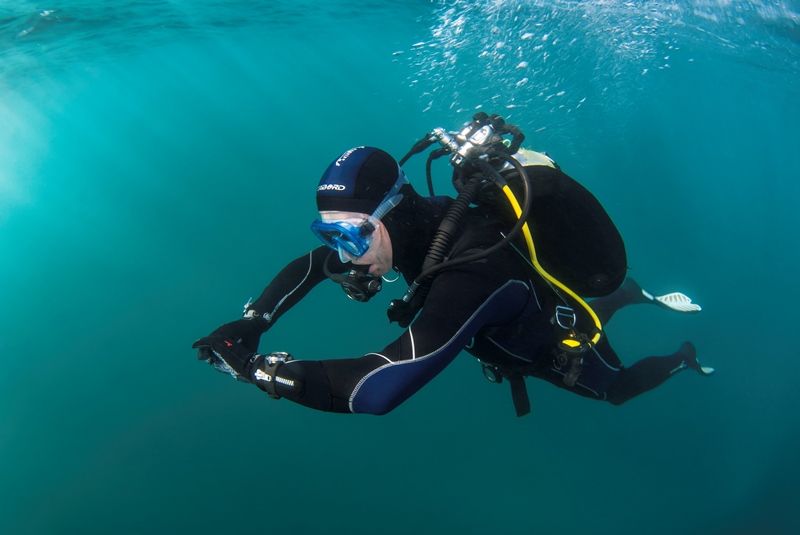Even those fortunate divers doing the majority of their dives in warm tropical waters, such as the Great Barrier Reef, still need a wetsuit of some kind, if only for protection from the tropical sun or marine stingers.
How A Scuba Wetsuit Works
A common myth about wetsuits is that they allow a small amount of water between the suit and the body which the body heats. This is wrong!
This small film of water between wetsuit and body is a waste of body heat. Whenever cold water enters this area, by movement letting in water at the ends of the wetsuit, the body has to heat up more water.
A wetsuit works by keeping the cold out; insulating the body from the cold water. That is why a suit with seven millimetres of neoprene is warmer than a three millimetre suit. It takes the cold of the water that much longer to get to the warm body inside.
Wetsuit Fitting
The best wetsuit hugs the body like a second skin and should be tight around the wrists and ankles to prevent water entering. It should be thick enough for the relevant diving conditions.
A common thickness for diving in Australia is five millimetres. For warmer climates, three millimetres can suffice while in colder areas wetsuits can be up to ten millimetres thick. When diving in extremely cold conditions, like the freshwater caves of South Australia, two thick wetsuits are sometimes worn.
A Wetsuit Out Of The Water
Another misconception with wetsuits is that they keep the body warm out of the water. This is only true when the wetsuit is dry.
When the wind blows on a wet wetsuit the water evaporates. For water to change from its solid form to vapour it requires energy. This energy comes from the body and is called “the latent heat of evaporation.” This results in the diver feeling cold as body heat is used to evaporate the water out of the wetsuit.
This is the same principle as the old waterbags: those canvas bags holding water used on the front of cars and trucks. When the wind blows on the bag, from the movement of the vehicle, the water on the outside of the bag evaporates using the heat from the water inside the bag, leaving the water cool.
This also explains why a wet wetsuit is always freezing to put on. The evaporation of the water has taken all the heat from the suit leaving it frigid.
Between dives, if there is a cold wind blowing, the wetsuit should be taken off. This will reduce the amount of heat lost from the body.
Another strategy is a wind breaking jacket over the wetsuit to cut the wind. This will do away with that demoralizing ritual of pulling on a cold, wet wetsuit.
Heat Loss From The Head
The majority of heat lost from the body is from the head. The blood vessels are close to the surface and the blood loses its heat quickly. This blood has to be then heated by the body core, losing more heat. Because of this it is surprising how the addition of a hood made of wetsuit neoprene can provide that little bit extra warmth.
When buying a wetsuit, these points should be considered. A good wetsuit that keeps a diver warm goes a long way to making scuba diving more enjoyable. And this is what scuba diving is all about.












